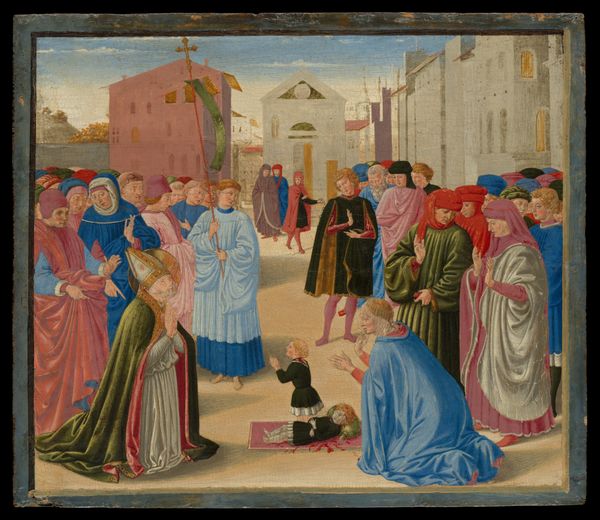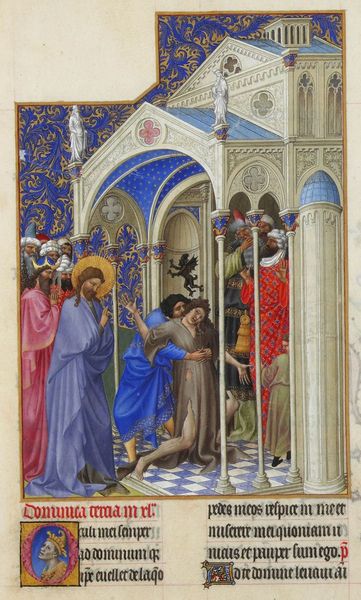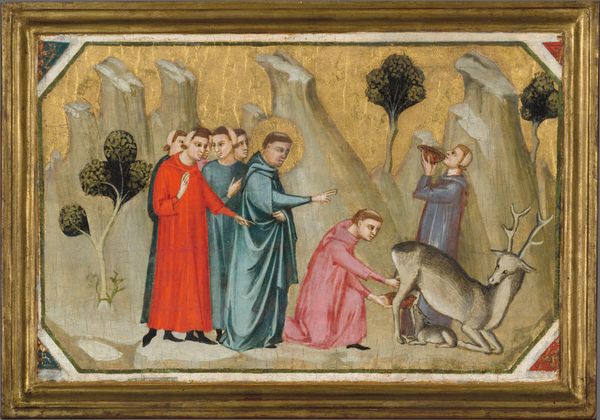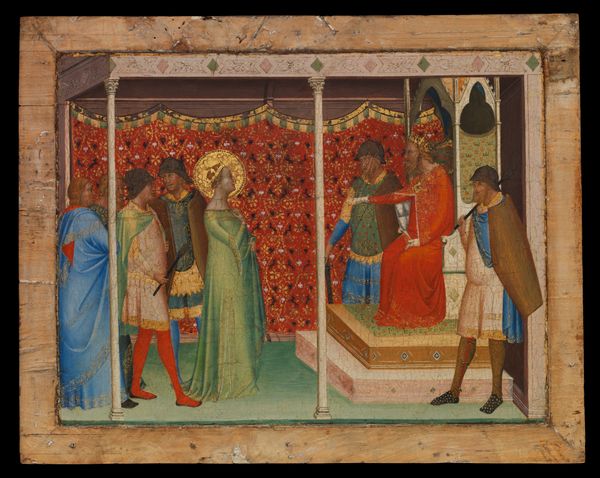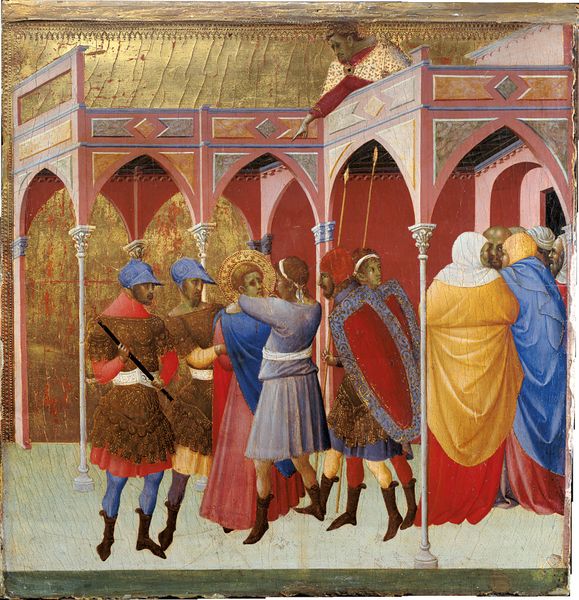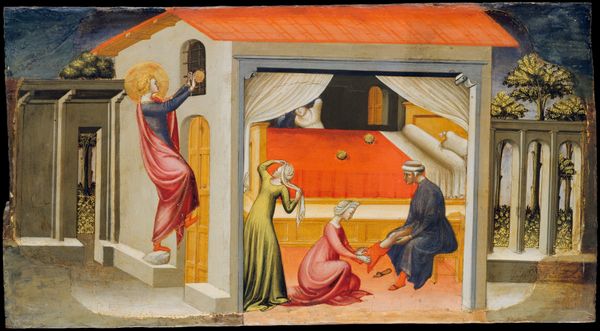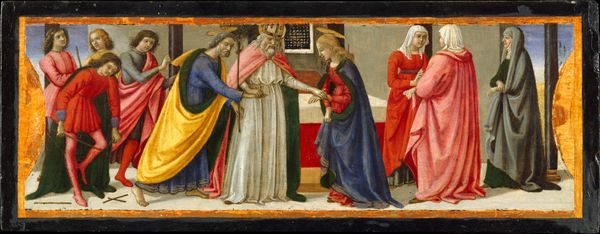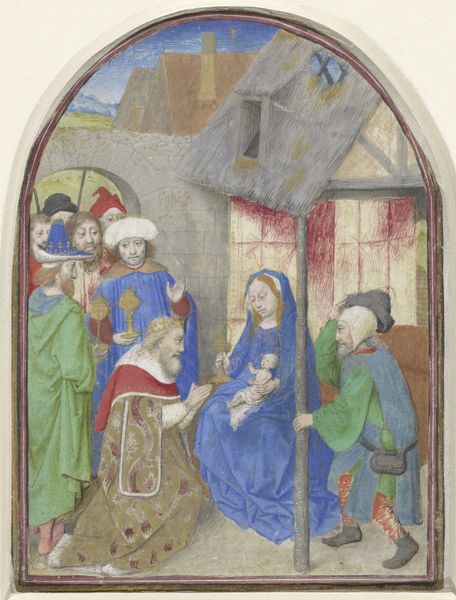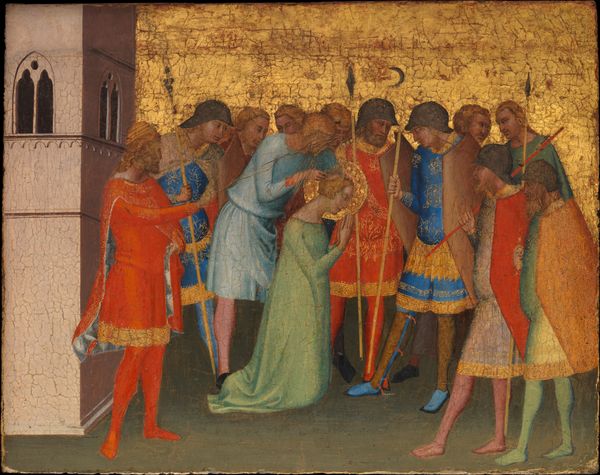
The Adoration of the Magi 1465 - 1475
0:00
0:00
panel, oil-paint
#
panel
#
narrative-art
#
oil-paint
#
landscape
#
figuration
#
oil painting
#
history-painting
#
italian-renaissance
#
early-renaissance
#
realism
Dimensions: 11 7/8 x 18 3/4 in. (30.2 x 47.6 cm)
Copyright: Public Domain
Curator: Here we have Sano di Pietro’s “The Adoration of the Magi,” an oil on panel painting dating back to the Early Renaissance, specifically between 1465 and 1475. You can find it here at the Met. Editor: Immediately, I get this serene, almost fairytale vibe. The colours are so gentle, and everything feels balanced, yet there is also a subtle awkwardness, almost primitive in a wonderful way. The space doesn't quite obey perspective! Curator: Indeed, Sano di Pietro was working within a specific artistic and cultural framework. He had a thriving workshop in Siena, catering to the devotional needs of the city and its surrounding areas. This panel was probably commissioned for a private chapel or a wealthy patron’s home, hence its manageable scale. Editor: You know, I can imagine it tucked away in a small chapel, like a shimmering jewel. The figures, although regal, don't feel grand, right? More like us common people dressing up and acting important. There's a touch of humour to their solemnity. I suppose they remind us that it is not just pomp, but a gesture of honest seeking that makes an offering meaningful. Curator: The historical and religious context is important. The Adoration of the Magi was a popular subject reflecting the universality of Christ's message. It emphasizes the idea of worldly power and knowledge bowing before spiritual truth. Early Renaissance art was also experiencing increasing patronage, which fueled a demand for such iconographic images. It gave visibility to wealth and devotion. Editor: Yes, these folks might well be the Kardashians of their era, bestowing golden gifts with the world watching, each cape meticulously catalogued in some proto-Instagram. But all joking aside, don't you just adore how Sano blends a certain theatrical presentation with, well, just sweetness? The way he has used colours has an ethereal quality, while they feel like earthy tones. The red saddle on the grey horse! Curator: Right, it is not a mere historical record but an artist’s interpretation and imagination. One can delve deep into art-historical methods of analyzing such painting through period, style, patronage, influence. But a painting comes alive when it inspires, delights, and sometimes amuses, no? Editor: It sure does. To look at this piece is to walk into someone else's dreams and wake up richer in colors!
Comments
No comments
Be the first to comment and join the conversation on the ultimate creative platform.



